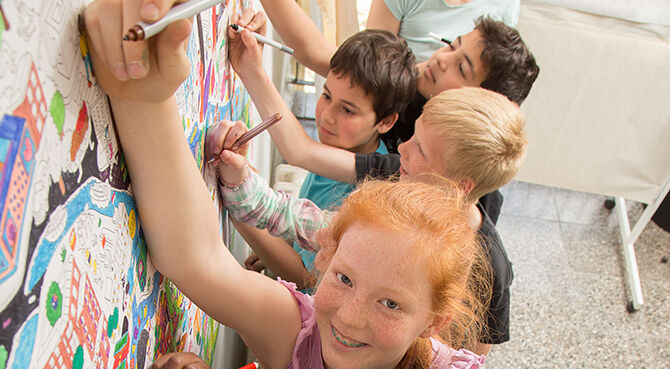How flexible classrooms prepare children for the world of work
Peter Kotrc, CEO of Berlin Brandenburg International School BBIS takes a look at how classrooms have changed across the centuries and how students have become agents of their own learning.

Following rules
With mandatory schooling beginning at the same time as the industrial revolution, at least in Europe, the scene changed: what was needed were young people who were able to follow rules, understand certain basics, be obedient rather than opinionated, and be ready for a job in a factory (or the army). And so schools designed classrooms with desks and benches set in rows, facing the teacher and the blackboard, accommodating 60 or more students who were all supposed to work at the same pace.Nowadays we do not want such a future for our children; our aspirations have changed and with them the pedagogy. As a result so has the layout of the classrooms. Future jobs require team workers and so the furniture must enable collaboration and has to be flexible, as teams change. Work asks for concentrated individual solutions and so quiet outbreak areas where children can have space to think and problem-solve individually should be easily available. Sharing results as input for the next step of learning is key and so Smartboards, projectors and a lot of wall space are part of any contemporary learning environment.A space in the cloud
In today’s classrooms we are fortunate to have a vast extension through the provision of virtual space. Notes and materials are no longer stored in cupboards or carried around in heavy schoolbags but every student has his or her space in the cloud. A strong wireless local area network (WLAN) has become even more important than a high-end laptop (all machines have become strong enough to serve most student needs, once they get on the internet).When schools do not reflect the demands of the military any more, and space does not contribute to such an attitude, what we teach students has to be much more relevant to them, as they have become agents of their own learning. That motivation is stronger than all other forces – but the right space is highly influential too.Related articles:
So, when visiting a potential new school in your future location, have a look at the space, check how flexible the layout of desks and chairs are as this reflects how flexible teachers in the school are, which is clearly a trait much needed for successful years of learning.BBIS is a 700 student international English-Language IB Day and Boarding School, offering Early Education through Grade 12. It has extensive facilities at its campus in Berlin and was the first school in the world to provide all four IB programmes.







































